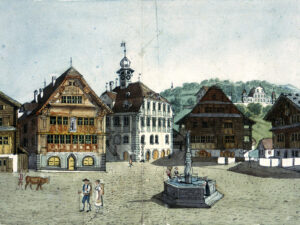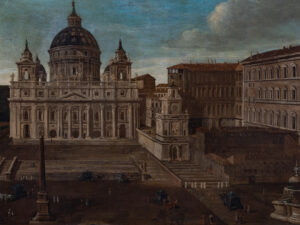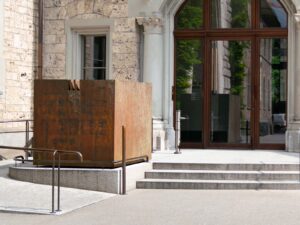
A memorial’s long journey
Schang Hutter, who died in 2021, created a memorial to the Holocaust in 1996. Two years later, his sculpture Shoah stopped many people in their tracks on its journey around Switzerland, but the piece also came in for harsh criticism.
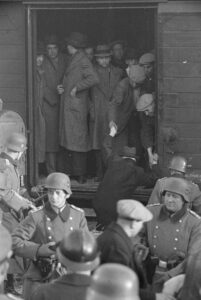
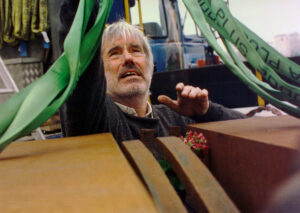
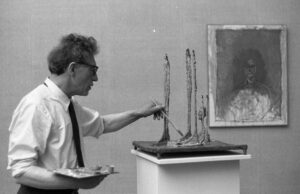
TV report about Schang Hutter’s Shoah sculpture in front of the Bundeshaus (in German). SRF

Anne Frank and Switzerland
The diary of Anne Frank is world famous. It’s less well known that the journey to global publication began in Switzerland. Anne, her sister and her mother all died in the Holocaust. Otto Frank was the only family member to survive. After the war, he initially returned to Amsterdam. In the 1950s, he moved in with his sister in Basel. From there, he made it his task to share his daughter’s diary with the world whilst preserving her message on humanity and tolerance for the coming generations.

